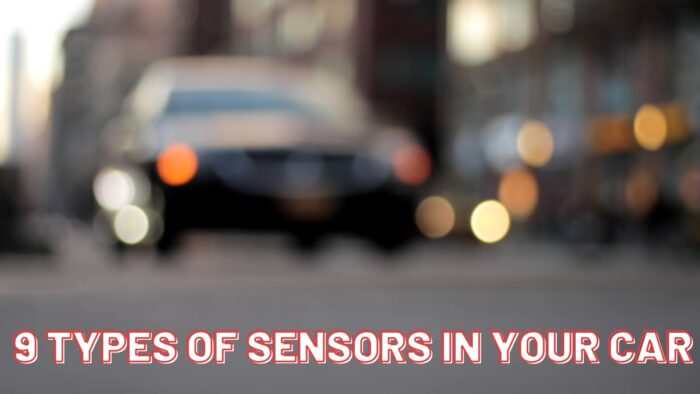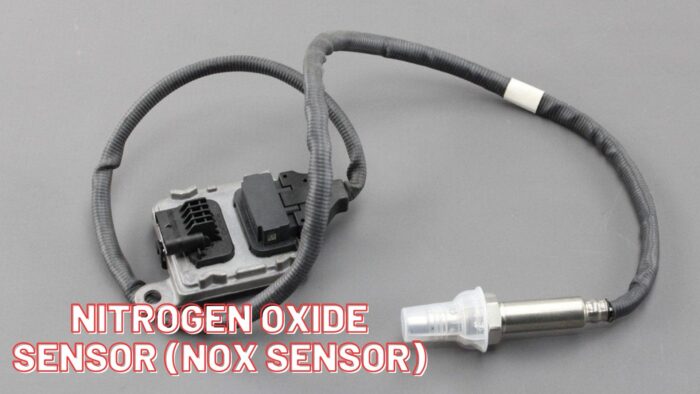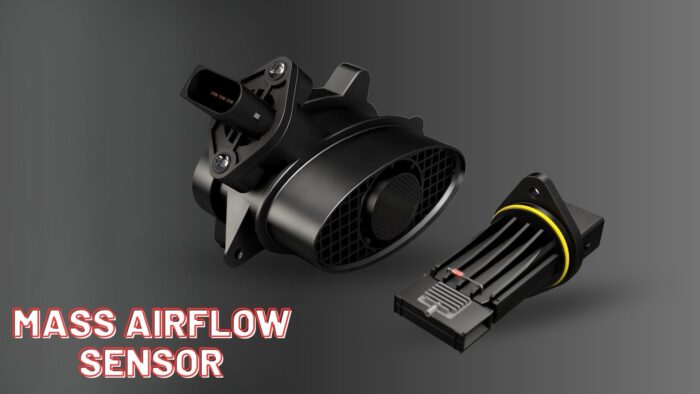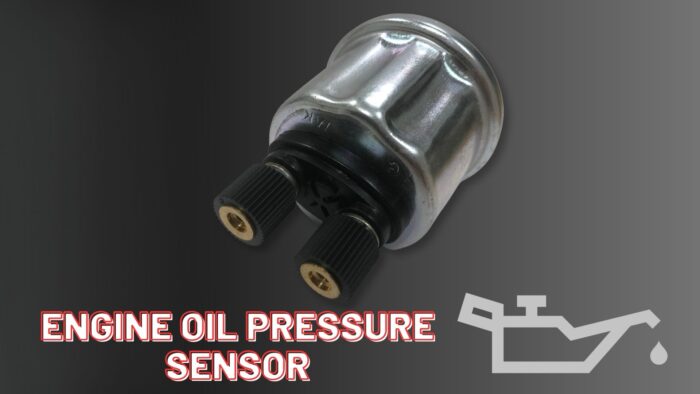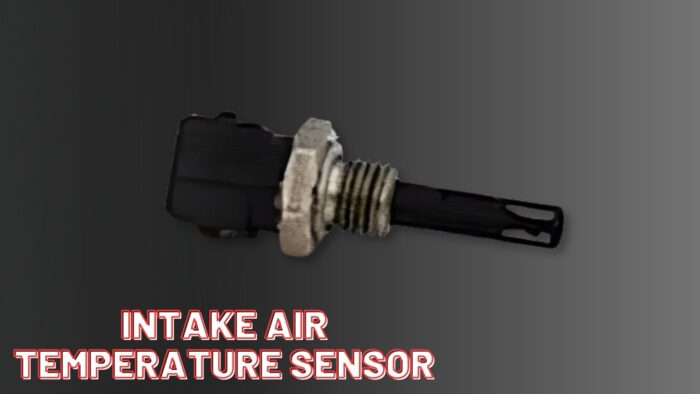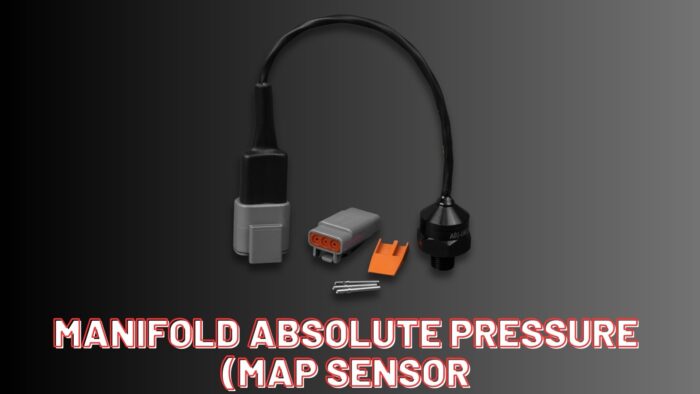Modern cars are equipped with a vast array of sensors that play a crucial role in ensuring optimal performance, safety, and efficiency. In this guide, we will look at the different types of sensors found in cars and get to know their functions, locations, and potential signs of failure.
Let’s begin with one of the important sensors – the nitrogen oxide (NOx) sensor – and then proceed to cover other essential sensors in your vehicle.
Table of Contents
Nitrogen Oxide Sensor (NOx Sensor)
One of the sensors commonly found in vehicles, particularly those powered by diesel engines is the nitrogen oxide sensor (NOx sensor). This sensor is responsible for measuring the levels of harmful nitrogen oxide particles in exhaust gases.
By monitoring these emissions, the NOx sensor helps the vehicle’s emission control system make adjustments to reduce pollution and ensure compliance with environmental regulations.
Location: The NOx sensor is typically located in the exhaust system, attached to the exhaust pipes. Look for a cover with an electrical cord coming out.
Signs of Failure: If the NOx sensor malfunctions, you may experience a significant drop in fuel economy and engine power. Additionally, your vehicle might enter a “limp mode,” where its performance is severely limited, or it may even stall entirely. If you do need to replace a broken NOx sensor visit DPFPartsDirect.com for more details.
Oxygen Sensors (O2 Sensors)
Oxygen sensors, also known as O2 sensors monitor the amount of oxygen in the exhaust gas before and after it exits the tailpipe. By providing this information to the Electronic Control Unit (ECU), oxygen sensors help regulate the air-to-fuel ratios, ensuring optimal combustion and efficient engine performance.
Most modern cars are equipped with two oxygen sensors per exhaust pipe. Single-pipe systems have two sensors, while models with dual exhaust have at least four.
Location: Oxygen sensors are typically mounted in the exhaust system, with one sensor before the catalytic converter to measure the incoming air and another after the converter to measure the outgoing emissions.
Signs of Failure: A failing oxygen sensor can lead to a reduction in fuel economy by up to 20%. Look out for additional signs such as black smoke from the exhaust, a sulfuric smell, engine hesitation or surging, and other symptoms indicating a potential oxygen sensor issue.
Mass Airflow Sensor
The mass airflow sensor (MAF sensor) plays a crucial role in the fuel injection system of a vehicle. It measures the volume of air entering the engine’s intake system and relays this information to the ECU. Based on the MAF sensor readings, the ECU determines the appropriate amount of fuel to deliver, ensuring optimal combustion and engine efficiency.
Location: The MAF sensor is typically positioned on the left side of the engine compartment, between the vehicle’s air filter and intake manifold.
Signs of Failure: A faulty MAF sensor can cause irregular fuel delivery, leading to poor engine performance. Symptoms of a malfunctioning MAF sensor may include difficulty starting the engine, stalling shortly after starting, or hesitation during acceleration.
Engine Oil Level Sensor
To protect your engine from damage caused by insufficient lubrication, most modern vehicles are equipped with an engine oil level sensor. This sensor monitors the oil level in the engine and triggers a warning light on the dashboard if the oil level drops below a certain threshold.
Location: The oil level sensor is usually visible from underneath the vehicle and is mounted to the side of the oil pan. It can be identified by an electrical cord coming out of it.
Signs of Failure: A faulty engine oil level sensor may provide incorrect oil level readings, which can be verified by manually checking the dipstick. Additionally, you may notice the dashboard oil light turning on and off repeatedly. In severe cases, the engine may fail to start or exhibit other abnormal behaviors.
Engine Oil Pressure Sensor
Another critical sensor related to engine oil is the engine oil pressure sensor. This sensor monitors the oil pressure within the engine and alerts the ECU to display a warning light on the dashboard if the pressure falls outside the optimal range. Low oil pressure can lead to insufficient lubrication, potentially causing engine damage.
Location: In most cases, the oil pressure sensor is located on or in the engine block near the bottom of the cylinder head. It is typically threaded in with one or two outward-facing pins.
Signs of Failure: If the engine oil pressure sensor malfunctions, you may see a red low-pressure indicator on the dashboard, even if the oil levels are normal. Additionally, you might experience the check engine light illuminating, or hear unusual rattling sounds coming from the engine.
Coolant Temperature Sensor
The coolant temperature sensor (CTS) is responsible for monitoring the temperature of the coolant/antifreeze mixture in the engine’s cooling system. By providing this information to the ECU, the CTS helps regulate the engine’s operating temperature and ensures efficient combustion.
Location: Depending on the vehicle’s year, make, and model, there may be one or two coolant temperature sensors. Newer cars typically have a single sensor located near the thermostat housing. Older models may feature an additional sensor to control the radiator fan.
Signs of Failure: A faulty coolant temperature sensor can lead to engine overheating. Keep an eye out for the check engine light appearing as well as symptoms like poor fuel mileage and engine performance.
Intake Air Temperature Sensor
The intake air temperature sensor (IAT sensor) measures the temperature of the incoming air into the engine. This information helps the engine management system adjust the air-to-fuel mixture based on external temperature conditions, ensuring optimal combustion and performance.
Location: The IAT sensor is usually located between the air filter and the intake manifold, attached to the intake pipes. In some cars, the IAT sensor is integrated into the mass airflow sensor (MAF sensor) on the left side of the engine bay.
Signs of Failure: A malfunctioning IAT sensor can lead to decreased acceleration, difficulty starting the engine in cold conditions, rough idle, misfires, and poor fuel economy.
Coolant Level Sensor
To prevent engine damage due to coolant loss, many vehicles are equipped with a coolant level sensor. This sensor monitors the coolant level in the cooling system and alerts the driver via a dashboard indicator if the level drops below a certain threshold.
Location: The coolant level sensor is typically part of the cooling system and can be found on the radiator or the bottom of the expansion tank.
Signs of Failure: A faulty coolant level sensor may cause the dashboard oil warning indicator to remain on. It is crucial to monitor the engine temperature, as a low coolant level can lead to overheating. Check the coolant level manually using the dipstick if you suspect a problem with the coolant level sensor.
Manifold Absolute Pressure Sensor
The manifold absolute pressure (MAP) sensor plays a vital role in the engine’s electronic control system. This sensor measures the absolute pressure in the intake manifold, allowing the ECU to calculate air density and optimize engine performance accordingly.
Location: The MAP sensor is typically positioned on top of the intake manifold, often beside or on the throttle body. In vehicles equipped with turbochargers or superchargers, the MAP sensor is usually located on the intake tract before the turbocharger.
Signs of Failure: A failing MAP sensor can result in reduced engine power and increased fuel consumption. You might also experience symptoms such as surging, hesitation, and engine stalls.
Conclusion
In today’s modern vehicles, sensors play a critical role in monitoring various aspects of the car’s performance, ensuring optimal efficiency, and enhancing safety. From the nitrogen oxide sensor that helps control emissions to the multitude of other sensors scattered throughout the vehicle, each sensor serves a specific purpose.
By relaying valuable information to the ECU, these sensors allow for timely adjustments and early detection of potential issues.
Understanding the functions and locations of these sensors can help you identify and address problems promptly, saving you from costly repairs and improving the overall reliability of your vehicle. Another long-term way of ensuring the reliability of your vehicle for a long time to come is switching to electric vehicles, a long-term investment that is gaining more and more popularity.
Remember, if a warning light illuminates on your dashboard, it’s because a sensor has detected an abnormality. Consult your vehicle’s manual or seek professional assistance to diagnose and resolve any sensor-related issues.
As sensor technology continues to evolve, it opens the door to a future of even safer, more efficient vehicles. The world of automotive sensors is constantly advancing, offering exciting possibilities for improved diagnostics, autonomous driving, and environmental sustainability.
In this ever-changing landscape, staying informed about the latest sensor developments empowers you to make informed decisions about your vehicle’s maintenance and upgrades. As the automotive industry accelerates towards electrification and automation, embracing sensor technology is key to ensuring a reliable and eco-conscious driving experience.
Let’s take as an example QR codes, short for Quick Response codes, which are becoming increasingly prevalent in the automotive industry as a convenient tool for accessing information related to vehicles. Many modern cars now come equipped with QR codes that provide easy access to user manuals, maintenance guides, and other essential resources.
By simply scanning the QR code using a smartphone or a compatible device, car owners can access a wealth of information about their vehicle, making it easier to understand its features, troubleshoot problems, and stay up-to-date with maintenance schedules. The integration of QR codes in the automotive sector enhances user experience, empowers car owners with valuable knowledge, and contributes to more efficient vehicle maintenance.
As technology continues to advance, we can expect QR codes to play an even more significant role in the automotive industry, simplifying interactions between drivers and their vehicles. Click here to learn more.

